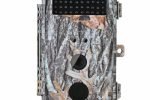How to set up trail cameras Properly

Trail cameras are a very useful tool which allows you to clearly identify the population, species, gender and age of the quarry you’re managing. It’s worth investing some time to understand the most effective way to use them. Blazevideo is one of the leading company that provides best quality trail camera for sale at affordable price online.
So, here are some top tips to successfully set up your trail cams.
Before you head out onto the land you manage, make sure your trail cams are ready. This means changing the batteries, wipe the battery contact points clean, format the SD cards and check the camera settings. If you’re using a brand-new trail cam, don’t let the first time you take it out the box to be when you’re about to hang it up. Spend some time learning the features, read the manual and make sure you understand all the functions.
Tip 1: Name your trail cameras
If you are planning to set up numerous trail cams it would be a good idea to name them. This way when it comes to checking the SD cards you can clearly identify which was more successful, this information will also help for future set ups. The camera will react each time the sensor is activated, decide exactly how many photos and videos you’d like it to capture. Every trail camera has a variety of options, however, two photos and a 10 second video would normally give you more than enough information.
Tip 2: Stay concealed
You need to reduce your scent as much as possible. Give each trail cam a thorough clean before setting it up. After which consider wearing gloves when you handling to avoid spreading any unwanted scent.
Tip 3: Knowing where you want to set up your trail cameras
Knowing the best location to set up your trail cam can sometimes be a challenge. You need to be able to identify the surrounding area for any significant signs. Take advantage of seasonal behavior. Feeders and mineral sites are the obvious choices for location, especially during the winter months. Look out for trails that possibly lead up to bedding areas, this can often be a promising sign you have a suitable place to position your trail cam.
Tip 4: Trail camera positioning
Positioning the camera is very important, you need to make sure the angle and direction is perfect. Keep the camera horizontal and hang it around 3 or 4 feet from the ground. You can sometimes go a bit higher to 6 or 7 feet, this all depends on the camouflage of the camera. Setting your camera side on to the sunrise or sunset will help to stop the images from becoming overexposed (whiteout).
Remove any wayward vegetation that is directly in front of your hunting video camera. Some cover is good, but make sure there isn’t any blocking the camera view if the wind blows. You don’t want to end up with hundreds of images of the same branch.
Tip 5: Let the trail camera do its job
Once the trail cameras are positioned and in working order, leave them up. You will be tempted to want to constantly check them, avoid revisiting the site for a while to allow the area to settle.
Depending on the camera location, leave the trail cams for more than two weeks. You can expect to have around 2000-3000 images and a number of videos during this period of time. Of course, not every photo will be useful. But if set up correctly your trail cam will help supply you with some really helpful information of animal activity and movement around the area you’ve positioned the trail camera.






